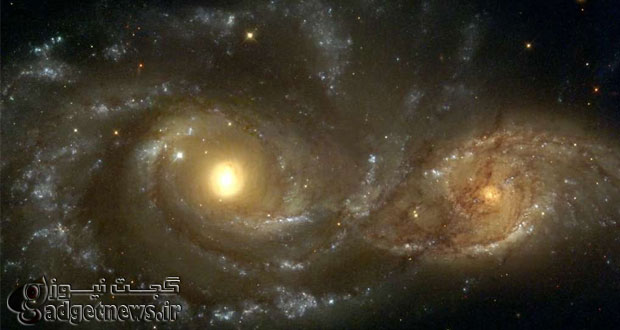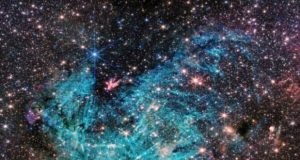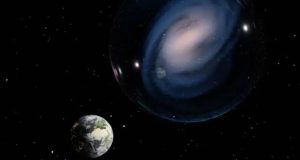مطالعه صورت گرفته توسط محققان استرالیایی نشان میدهد، کهکشان راهشیری تا پنج میلیارد سال دیگر توسط کهکشان آندرومدا بلعیده خواهد شد.
همه کهکشانها با کشیده شدن در گرد و غبار، گازها و آوار کیهانی، رشد کرده و ستارگان جدید تولید میکنند؛ اما با افزایش سن و رشد کهکشان، توانایی تولید ستارگان جدید کاهش پیدا میکند.کهکشان برای افزایش جرم، مجبور به بلعیدن کهکشانهای کوچکتر میشود.
محققان مرکز بینالمللی تحقیقات نجوم رادیویی به سرپرستی دکتر «آرئون روبوتام» از دانشگاه وسترن استرالیا، الگوی رشد 22 هزار کهکشان را مورد بررسی قرار دادند.نتایج این مطالعه نشان میدهد، کهکشان راهشیری دیگر قادر به تولید ستارگان تازه نبوده و باید به ستارهخواری کیهانی متوسل شود.
راهشیری برای ادامه حیات تا چهار میلیارد سال دیگر دو کهکشان کوتوله همجوار – ابر ماژلانی کوچک و بزرگ – را خواهد بلعید، اما خودش تا پنج میلیارد سال دیگر توسط کهکشان آندرومدا خورده خواهد شد!
نتایج این مطالعه در مجله Notices of the Royal Astronomical Society منتشر شده است.
پی نوشت : با توجه به این تحقیقات ، دیگر تفاوتی نمی کند که عمر زمین ، خورشید و در کل منظومه شمسی ، چقدر تخمین زده شده باشد چرا که احتمالا 5 میلیارد سال دیگر پایانی برای این سیستم خواهد بود!
منبع : washingtonpost
Only 5 billion years until The Milky Way gets gobbled up
Only 5 billion years until The Milky Way gets gobbled up
Scientists already knew that big galaxies like to chow down on smaller ones — which is just a cute way of saying that when they collide, the larger galaxy gains the mass of the smaller one.
According to a new study published in the Monthly Notices of the Royal Astronomical Society, galaxies turn to cannibalism when they get too big to keep growing on their own.
“All galaxies start off small and grow by collecting gas and quite efficiently turning it into stars,” Aaron Robotham, a postdoctoral researcher at the International Centre for Radio Astronomy Research and head of the study, said in a statement. “Then every now and then they get completely cannibalized by some larger galaxy.”
As galaxies grow, they get worse at making new stars — but they also have stronger gravity, which helps them pull neighbors into the fold. The Milky Way reached this tipping point “recently,” in cosmic terms (read: not at all recently) and will now grow mostly by snacking on the little guys. It’s been a while since our neighborhood ate another one, but astronomers can still see the signs of former galaxies that we’ve digested.
But The Milky Way isn’t going to be able to outrun Andromeda. In about 5 billion years we’ll collide with the nearby galaxy, which contains at least twice as many stars as our own. To Andromeda, we’ll be nothing but a cosmic candy bar.
These cannibalistic mergers will continue until the whole universe is made of just a few gigantic galaxies, but that’s a long way off — a destiny we won’t reach until the Universe is many times older than it is today.
 گجت نیوز آخرین اخبار گجتی و فناوری های روز دنیا
گجت نیوز آخرین اخبار گجتی و فناوری های روز دنیا 






